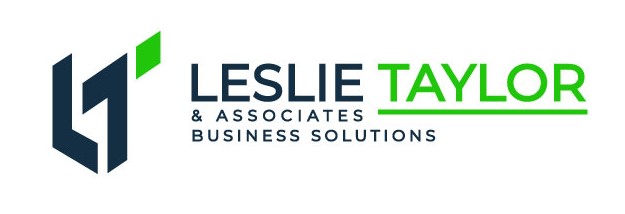Are you interested in improving your bottom line? This post will explain how getting a firm grip on your chart of accounts can and will help you do that.
First, I highly recommend all business owners make the move from analog to digital. What I mean by that is that they should invest in financial software. My two favorites are Xero and QuickBooks. The main reasons why I recommend software is that it will (1) save you tons of time (and time is money), (2) help reduce mistakes (which will save you money), and (3) make it easier to understand how your business is performing (so you can properly plan to make more and keep more money).
Whether you have decided to DIY or have a financial professional supporting you, this blog will help you get the most out of your financial information so you can lead like a true CEO. The process I recommend is one you can do on your own or request the support of a financial professional to help you. Financial literacy in entrepreneurship doesn’t mean you have to learn accounting; but it does mean you need to be engaged in the financial process. Regardless of your aptitude with math or history with personal finances, all the things I share are learnable.
In my last blog, I discussed some basics of financial literacy for business owners; specifically bookkeeping, preparing a roadmap for success, and managing cash. If you want to get the most out of your bookkeeping you first need to optimize something called a chart of accounts.
A chart of accounts is a list of all the accounts in your business, and when set up correctly it helps you track your income and expenses. It is kind of like a filing system where similar types of expenses or income are grouped together in a single category called an account.
In this blog, we will discuss why a chart of accounts is important, the different types of accounts that are typically included in a chart of accounts, as well as how to create one for your business. Let’s get started!
One of the first things we do at our firm when we begin working with a new client is to optimize how their transactions are organized. We start with the chart of accounts. Even if a business has already had someone doing its financial accounting or bookkeeping, the chart of accounts may not have been optimized.
What does it look like when the chart of accounts hasn’t been optimized? It looks like it has 8 different products or services under a single account or category called “Sales.”
With this kind of setup, while the owner can see how much they made in sales, they don’t have a clear picture of how the 8 different products or services are performing. They can’t tell what their top revenue streams are, or which ones are performing poorly.
A chart of accounts is important because it allows you to do just that – track the performance of your products and services, as well as track where your money is going in greater detail.
The main types of accounts in a chart of accounts include bank, assets, receivables, payables, liabilities, equity, income, cost of goods sold, and expenses.
Let’s take a closer look at each one.
Bank: This is an account held at a financial institution, such as a bank or credit union, that contains the cash balances of the business. Bank accounts include the types of accounts found at a bank. For businesses, those generally include checking and savings accounts.
Asset: An asset is anything of value that the business owns. Assets include vehicles, buildings, and expensive equipment.
Receivables: Receivables refer to money that is owed to the business by some other entity or individual.
Liability: Liabilities refer to money the business owes to another individual or entity. Liabilities include loans, credit card debt, and payables.
Payables: Payables refer to money that the business owes to its vendors and suppliers. Payables are a type of liability.
Equity: Equity is what is left over after the liabilities (what is owed) is subtracted from what is owned (the assets). This includes owners’ or shareholder’s equity that is invested into the company as well as retained earnings (total earnings since the start of business that have been kept in the business).
Income: Income is the amount of money that the business has earned.
Cost of goods sold: Cost of goods sold (COGS) is the direct cost of producing, providing, or acquiring the products or services that the business sells.
Expenses: Expenses are the costs of doing business.
Now that you know the main types of accounts, let’s discuss how to set up your own.
First, you need to decide which accounts are applicable to your business. Not all businesses will have every type of account. At a minimum, there should be an account for each basic product type so the performance of each revenue stream can be tracked. The expenses should also be detailed in the same way and placed in the appropriate accounts. Note: There are basic accounting rules that determine which transactions go into a particular type of account, so if you decide to DIY, it is good to have a basic working knowledge of financial accounting as errors will cost you money later down the line.
Second, you need to determine the name and description of each account. The name should be easy to understand, and the description should provide enough detail so that it is clear to you and others months later what the account is for. Financial software usually comes with chart of account templates that have common names for accounts. This is a good place to start when naming if you aren’t sure.
Third, you need to assign each account a number. The numbers should be sequential and easy to remember. This creates order within your account system and makes it easier to search for and find items as well as creates an easier-to-read format for the reports you will generate.
Finally, transactions should be recorded to the appropriate account.
Once you have created your chart of accounts, you need to make sure that it is updated on a regular basis. As the business changes, new products, services, or categories of expenses should be updated.
Helpful Tip: Sometimes I forget in which account I need to place a particular type of transaction. If you forget where something belongs, run a search within your financial software to determine where you placed it the last time.
If you don’t have time to do all this yourself, or if tackling this project doesn’t fall within your zone of genius don’t worry because it’s ours! As business solutions experts, we have helped dozens of businesses untangle complex issues and clarify a path to greater profitability.
Let’s schedule a Discovery Session.

